The following paper was presented on 11 May 2016 in the Department of Cultural History, University of Turku, Finland, by visiting Professor of Cultural History Bruce Johnson paired with a paper presented by Professor Martin Cloonan of Glasgow University. Professor Cloonan’s paper, ‘Measuring Impact: Some observations from the UK’, gave an account of the current procedures by which research is evaluated in the United Kingdom, with particular reference to ‘Impact’.
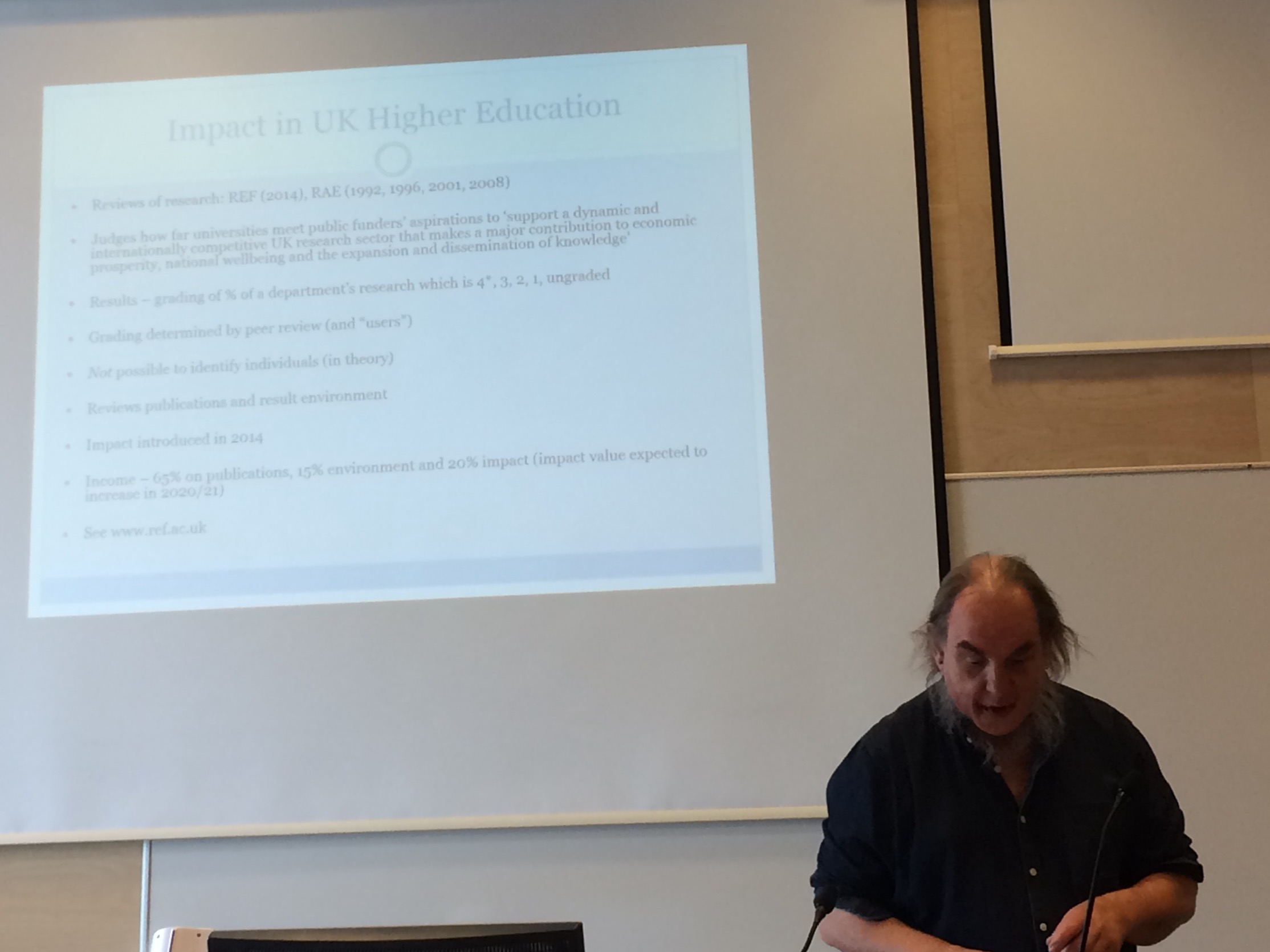
Prof Martin Cloonan discussing on the process of measuring social impact in the university system in the UK.
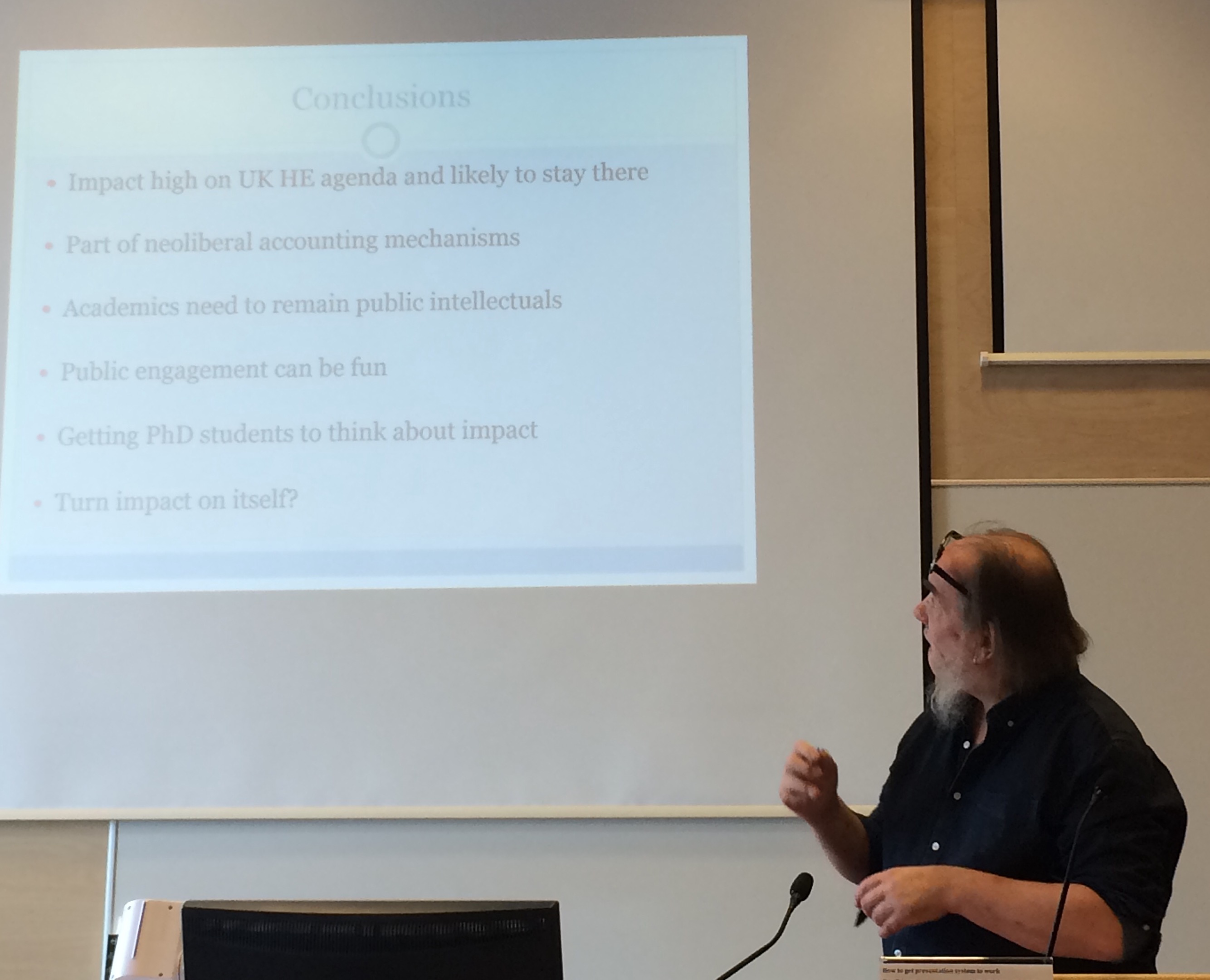
Prof Martin Cloonan discussing on the process of social impact in the UK.
***
In what I am about to say, I don’t want to seem to demean the importance of ‘impact’, the importance of academic research applied to the public interest. That kind of intervention has always been, for me, a primary objective. Like Martin Cloonan, I have engaged in work that has been directly applied to actual social practice, including generating changes to legislation relating to live music (See Bruce Johnson and Shane Homan. 2003. Vanishing Acts: an inquiry into the state of live popular music opportunities in NSW, Sydney: Australia Council/New South Wales Ministry for the Arts; see also Dave Panichi. 2009. ‘Regulation without representation’, in Perfect Beat 9/1, July 2009: 5-21).What we both challenge is not the importance of impact, but how it is often measured. The subject of my critique is the absurdities that grow out of a university system that has elevated profit over pedagogy.
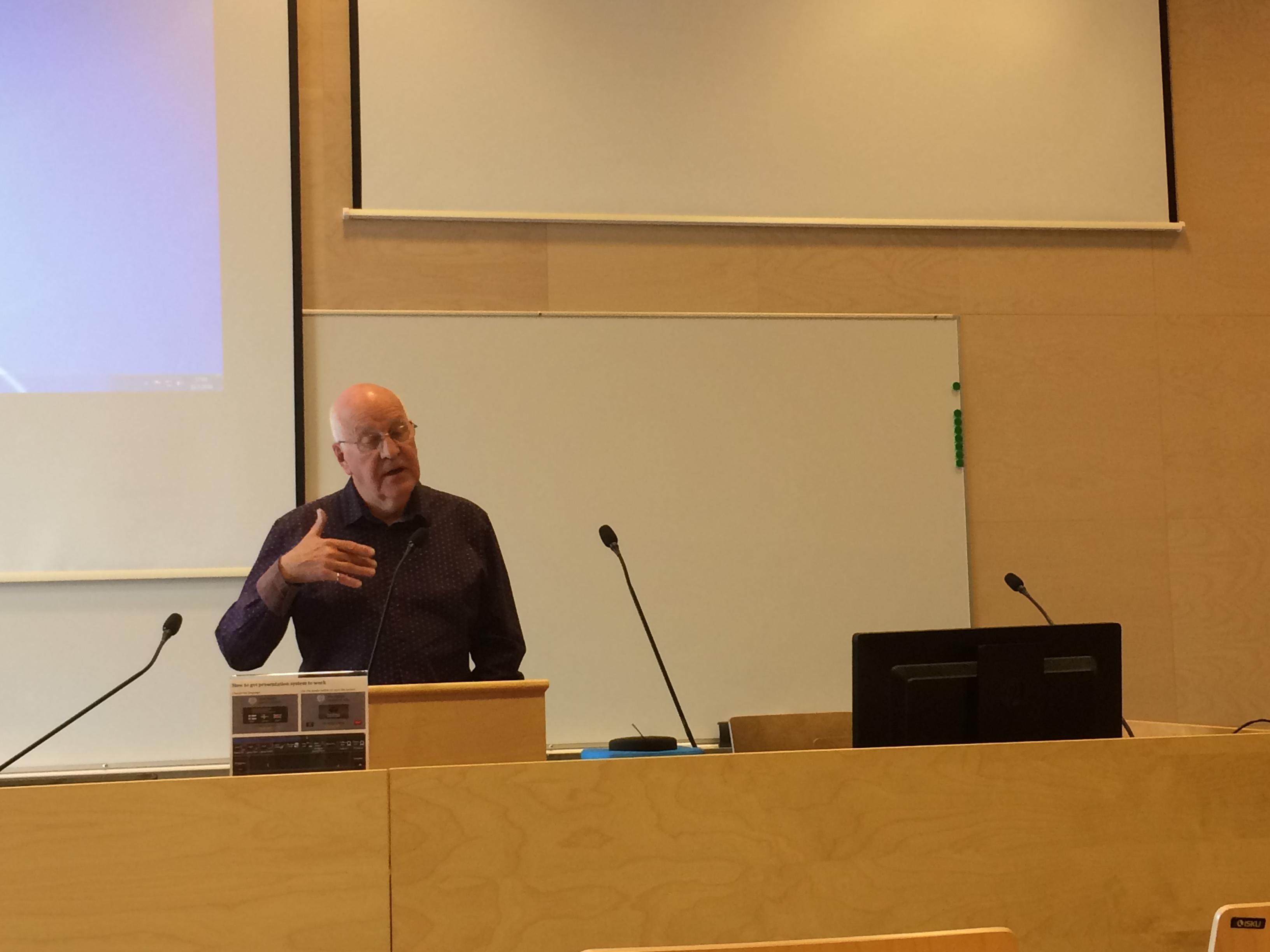 The picture painted by Martin, of a university system driven by its bureaucratic and accountancy arm, is familiar to me from experience in several Anglophone countries, most notably Australia. Nearly thirty years ago a White Paper produced by Education Minister John Dawkins led to what was called the Dawkins Revolution. In its wake there were forced mergers between universities and tertiary training colleges, the re-introduction of university fees, and a reduction in government funding to universities, which were then forced to chase income and to commercialise education. The research activity tended to be measured by the ability to attract funding through grants, leading to the absurd situation in which the value of a particular research project was assessed not by what it produced, but by how much it cost; that is, in effect, not by cost effectiveness, but by cost ineffectiveness.
The picture painted by Martin, of a university system driven by its bureaucratic and accountancy arm, is familiar to me from experience in several Anglophone countries, most notably Australia. Nearly thirty years ago a White Paper produced by Education Minister John Dawkins led to what was called the Dawkins Revolution. In its wake there were forced mergers between universities and tertiary training colleges, the re-introduction of university fees, and a reduction in government funding to universities, which were then forced to chase income and to commercialise education. The research activity tended to be measured by the ability to attract funding through grants, leading to the absurd situation in which the value of a particular research project was assessed not by what it produced, but by how much it cost; that is, in effect, not by cost effectiveness, but by cost ineffectiveness.
I illustrate with my own Faculty in the 1990s. A full-time staff member was appointed to give advice on all funding applications. I think this is an excellent idea, except for the fact that, in my own experience, this officer’s task was to raise the amount applied for. I am a researcher in the humanities. I don’t need to access a laboratory or a cyclotron. My most usual research tools are libraries, archives, interviews, for which the main expense is travel, per diems, copying, audio-visual recording equipment. Generally, I can produce a high level of research output for several thousand dollars each year. My first and second experiences with the advisor on grant applications were that her main function was to increase the amount requested. My application was for $5,000 or $6,000. She said, ‘Oh you need more than that’. I replied, ‘Well, no, I don’t’. But by the time our discussion finished, I found that I was putting in an application for, as I recall, at least three times that amount. Somewhere along the line, common sense prevailed and the application failed.
In order to encourage staff to increase the amounts they requested, we were informed that, as an incentive, if we submitted an application for over a certain sum, and it failed, we would receive $5,000 in ‘consolation’, from the Faculty fund. Well, I thought – that will do me. So I began submitting requests for inflated sums. I didn’t have to waste much time on these, because I didn’t actually need them to be successful. My applications inevitably failed, and I received the amount of funding I really needed, which enabled me to continue to be among the most productive researchers in terms of publications in the Faculty. I became the Faculty’s most successful unsuccessful grant applicant, and at one point a couple of colleagues asked if they could use my applications as a template. The system was abandoned after about three years.
I am not making this up. In fact, it was at this point that it really dawned on me that while as academics we had been hired to behave rationally, we were in fact required to endorse irrationality. When I began my association with Finnish universities two decades ago, I realised just how degraded the Australian system had become, and, in spite of my cynicism, how far I had been drawn into that mindset. It was during a day-long symposium here in the University of Turku about implementation of the Bologna process, which makes it about 2000, since the Bologna Declaration was signed in 1999. I was interested in the process, and was invited along. I listened to the enormously complex problems that the half dozen or so academics were addressing, and in the lunch break I observed that this was such a difficult problem, involving the investment of so much time and energy that I was moved to ask: what was the payoff, how might solving this problem affect the funding received by the faculty? One of the professors looked at me with slightly surprised disdain and said, ‘This is not about money. It’s about the sharing of knowledge’.
I had enormous admiration for this intellectual spirit. And in fact that played some role in my decision to take early retirement from my Australian university. With profit becoming the primary driver, there were documented cases of university staff being pressured by the management to relax standards for international students because they bring in enormous sums of money in fees. At least one of these cases destroyed an academic career, and I am sure there were many other less publicised examples. As I said to one of my colleagues, so how long before bridges and apartments in southeast Asia start falling down? The answer is: they have, as you will have read in the press; most recently, on 1 April (See Sydney Morning Herald (SMH) 1 April 2016), a 2 km. overpass in India collapsed. Probably the main reason is corruption in the construction industry, but it would also be interesting to study the training history of engineers and architects involved in structural collapses in the region over the last two decades.
With profit more important than the broadest possible spectrum of education, university departments have been shut down, and classes in others have been reduced. Employers are noticing a drop in standards, and in some disciplines up to 50% of graduates from Australia’s top-ranked University of Melbourne still remain unemployed six months after graduation (SMH 1 April 2016). Recent reports in the Australian press show a sudden acceleration of this process. Sydney University is reducing the number of degree programmes it awards from 122 to 20 (SMH 31 March 2016). This is to make it ‘more competitive’ among Australia’s 43 universities, and as they are also planning to increase the intake of high-fee-paying overseas students, ‘competitive’ seems to mean economically rather than intellectually. At Sydney University the international students, mainly from China, pay up to $A40,000 (about 20,000 Euros) each year to take the post-graduate business degree (SMH 4 April 2016).
In the same week as some of the reports I have cited, (SMH 26 March 2016), I was pleased to see an article called ‘Why Finland Has the Best Schools’. Then on April 11, a further article on why Australian schools will never be as good as Finnish ones.
Indeed, it is still so, in my experience, but every year I visit here I discover again what we all know: the tide of accountancy driven education policy that began to submerge Anglophone universities thirty years ago has, alas, risen here in Finland also. This has been associated with economic recession. Just in the years 2006 to 2009, unemployment in Finland rose from 7.6% to 8.2%, while GDP went from 4.1% to minus 8.3%. But as far as our situation here is concerned, there are deeper currents at work.
All these data reflect and are associated with a basic shift towards the commodification of education. Education is no longer primarily a process that the student actively engages in, but a product that the student buys. And in Australia this has become literally so. Recently in Sydney an investigation revealed the existence of a very successful million dollar business, set up by a young Asian woman, whose sole function was to sell essays to international students. There was even a price differential: you could buy a bargain-priced average essay, or pay a great deal more for essays likely to receive a higher mark. Presumably the former included a few errors or lacked original insights. In 2014 up to 1000 students from sixteen universities had hired the Sydney-based MyMaster company to ghost-write their assignments and sit online tests. In the wake of the investigation two university students were expelled and a further seventy faced severe penalties, with four having their degrees revoked from NSW’s most prestigious universities after being identified in connection with the online essay writing company (see further).
This was the most alarming manifestation of a process that can be dated back to the Dawkins White Paper: the student is no longer a producer of an educational outcome, but a consumer, a buyer, of an educational product.
I am interested in the larger forces driving that shift, and one place to begin is that word consumer.
One of the first signs of the shift was what seemed to me to be the increasing sense of helplessness among Australian university students. It manifested itself in The Phone Call, the night before an assignment was due. The due date had been known for months.
‘I’m having trouble with this essay’.
Following a long discussion regarding what research the student has conducted, it usually ended with her/him asking me what they should do now. What these students could not do is to simply start producing it themselves. What they want is … The Essay – delivered by the essay fairy to the door or under their pillow when they wake up in the morning.
The more immediate origins of consumerism arose from industrialisation which led to a growth in production that exceeded consumption – one of the causes of two serious financial depressions in the US in the 1870s and 1890s (see further, for example, H.W. Brands. 1995. The Reckless Decade: America in the 1890s. Chicago: University of Chicago Press), and it became necessary to persuade people that they should consume more. We are beginning to see the material problems, in resource depletion, technological waste, pollution. But there is a cultural problem also: the reduction of our power to produce ourselves as meaningful individuals. In a world driven by the idea of a growth economy, the ideal average citizen is a consumer, not a producer. This is why we have so much trouble changing from consumers to producers, why we can’t start the essay. All the pressure brought to bear upon us tells us that our social function is to consume things, not produce things.
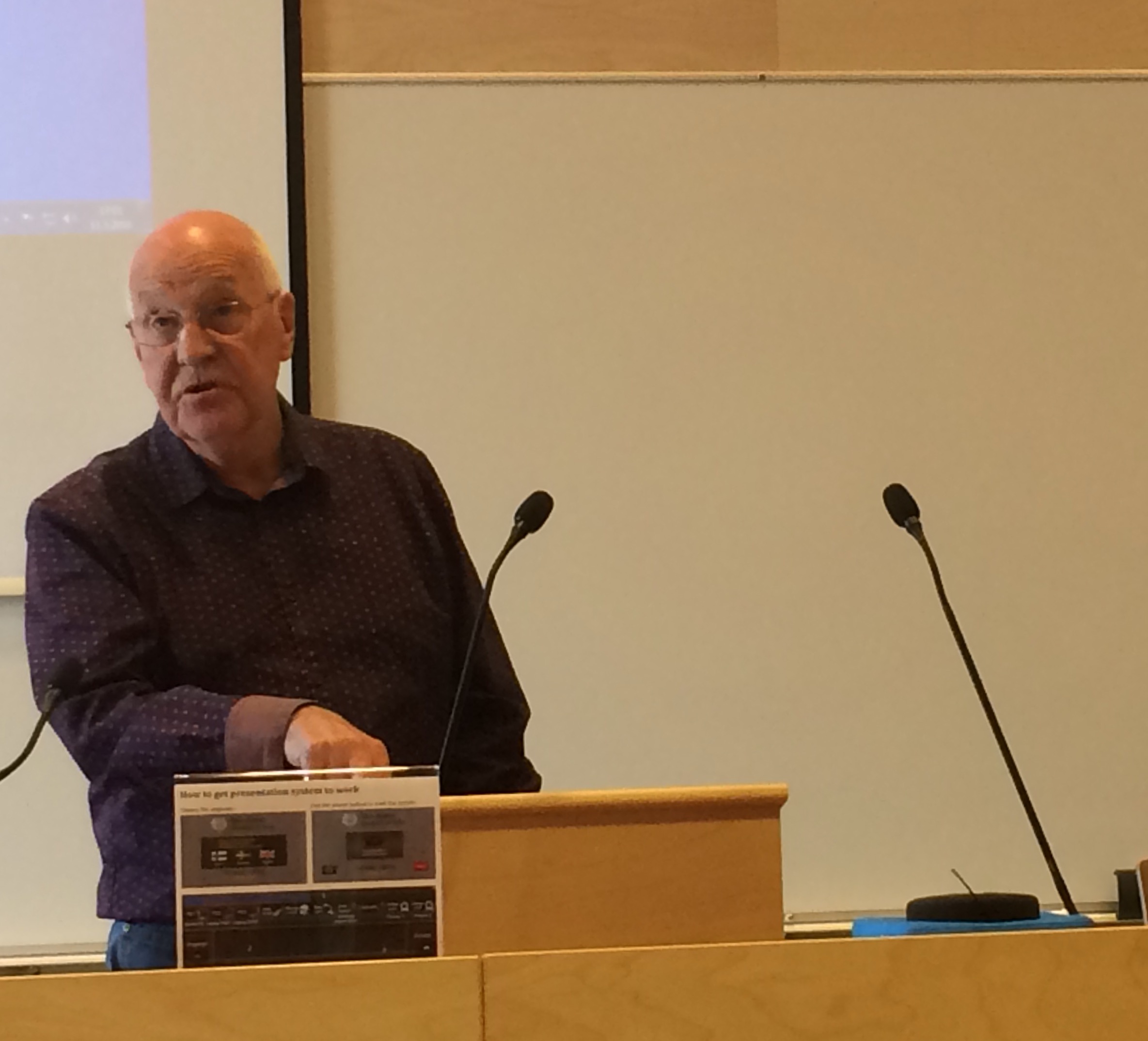 The title of my paper invokes an analogy with climate change. My argument is that the deterioration of the tertiary education system is not just the manifestation of a localised cluster of problems that can be solved simply by changing an education policy, in the same way that increasingly widespread drought will not be solved by installing some irrigation systems. Climate change is pervasive, the cause of an immense range of problems that would otherwise seem unconnected. Likewise, problems in the university are in fact the expression of more pervasive problems that affect areas of life that would otherwise seem to have nothing to do with each other. Consumerism extends its influence throughout the entire web of our contemporary lives. In what follows, then, there will be points at which you will wonder what I am saying has to do with the university system. That is part of my argument; bear with me – I will draw us back.
The title of my paper invokes an analogy with climate change. My argument is that the deterioration of the tertiary education system is not just the manifestation of a localised cluster of problems that can be solved simply by changing an education policy, in the same way that increasingly widespread drought will not be solved by installing some irrigation systems. Climate change is pervasive, the cause of an immense range of problems that would otherwise seem unconnected. Likewise, problems in the university are in fact the expression of more pervasive problems that affect areas of life that would otherwise seem to have nothing to do with each other. Consumerism extends its influence throughout the entire web of our contemporary lives. In what follows, then, there will be points at which you will wonder what I am saying has to do with the university system. That is part of my argument; bear with me – I will draw us back.
We are led to think of ourselves as insatiable consumers. One of the pressures pushing us in this direction, advertising. I want to emphasise that modern advertising can only work by depriving us of any agency apart from that of the consumer. Billions of dollars are poured into devising the most ingenious ways of making us consume. As early as the mid-1890s, the trade journal Printer’s Ink was advising its readers to engage with the emerging field of psychology; in 1906 Professor Walter Dill Scott declared ‘the successful advertiser must study psychology and he must do it at once’ (cited Jon Savage. 2007/8. Teenage: The Prehistory of Youth Culture. London and New York: Penguin: 116). Noting those dates of the crisis in over production in late nineteenth century US, it is not surprising that the world’s first international advertising campaign can be regarded as the 1893 World Exposition in Chicago, which in particular sought to increase the export of US commodities.
That objective has been brought closer by increased sophistication in consumer marketing, to which we are exposed daily, and often subliminally. Consider the supermarket, a primary site of marketing manipulation of insidious ingenuity.
- Increasing trolley sizes, and now, in Australia, ‘baby trolleys – oooh, isn’t that sweet, and how civic-minded of the supermarket to provide this ‘baby-minding’ toy while Mum gets on with the shopping. But it is deeply insidious, indoctrinating little ‘trainee’ consumers, whose mums often actually let them load up indiscriminately.
- The low number of ‘12 items or less’ lanes’; that is, lanes which might encourage us to buy less.
- Tricks of product placement:
– ‘adjacencies’ (slow sellers next to fast sellers);
– products within child reach;
– hand written price tags to create the impression of special bargains;
- slowing your movement: (it has been estimated that for every additional minute the supermarket can keep you there, you will spend a further $A1).
Choice of music
‘speed bumps’: obstacles in a lane that slow you down
- Checkout queues themselves are marketing strategies, flanked by the ‘impulse merchandise’ waiting for you, especially magazines that you pick up to pass the time – and each magazine itself is full of advertising that raises desire.
Advertising is the primary instrument of consumerism, and it has two objectives that also require the suppression of critical thinking:
a/ to create desire, with the promise that only a particular product will satisfy it, but
b/ to provide a product which does not permanently satisfy that desire – otherwise you would cease consuming.
A further challenge for advertising is to reconcile mass society with the cult of individualism. It wants to make the product desired by as many people as possible. But at the same time, it can only persuade you to buy if in doing so you feel special. Look through the advertisements in any newspaper or life-style journal, and count the number of times it informs you that it is selling something that fits exactly your particular profile. It, alone, is what YOU need to fill the lack, to achieve fulfilment. It is what YOU deserve!
Consider what this means: the whole purpose of advertising is to make all individuals dissatisfied with who they are and what they have. It systematically inculcates negative emotions: low self-esteem – in relation to status, body image, even geographical location; unappeasable desire and envy. It is the task of advertising to persuade us that our lives are inadequate, that we desperately need things that we do not want, and that we can have them immediately if we buy that product. The words of a car advertisement in Australia some years ago were: ‘I want it all, I want it now’.
So we must stuff more pre-processed commodities into ourselves. It is no accident that one of the greatest health problems in the US and Australia is obesity, that is, carrying more body tissue than you can actually burn away. But you must also become mentally obese – importing more information than you can ever use. Students carry this mental obesity into their study programmes. We can access books, articles, websites, producing a growing file at home of photocopied or down-loaded documents that we have never read, music we will never listen to. We are inundated with more information than ever before, but we are deprived of the means, and even the desire, to assimilate it. How often have you asked a student, ‘Do you know this book?’, to be told, ‘Well, I’ve got it’.
When we want to start producing instead of consuming information, we have great trouble knowing how to proceed. Will I start producing my essay? Maybe I will read one more book, download one more article. We are indoctrinated to consume culture, not produce it
Even in our approach to leisure and recreation we are consumers of ready-made mechanisms and processes. As long ago as 1927, Aldous Huxley attacked this aspect of US culture: he believed that ‘ready-made distractions’, incessantly marketed at the working class with manipulative advertising, meant that ‘our leisures are now as highly mechanised as our labours … [in] the sphere of play no less than the sphere of work, creation has become the privilege of a fortunate few’ (Proper Studies, cited by Alex Harvey, ‘Hug me till you drug me’. London Review of Books, 38/9, 5 May 2016).
Today, he would be even more appalled in a society of Dial-a-Pizza, Dial-an-Education, Dial-a-Life. In Australia, in spite of the proliferation of recipes in life-style magazines, and the installation of expensive designer label kitchens, less is now cooked in the home every year. Who makes their own toys, their own decor and recreation? Even our own domestic festivities like birthday parties are likely to be ‘outsourced’ to a fast-food outlet like MacDonalds. The holiday is pre-packaged. The book or wine selection is made for us. We don’t go for a walk, we buy time on pre-fabricated distance: a treadmill in a gym. All these pre-fabricated special-purpose commodities encourage the idea that culture is something made for us, not by us.
This idea of pre-fabrication is central to the construction of the disempowered consumer. I call it the ‘Sealed Unit’ phenomenon: that is the product which is constructed in such a way that we cannot be part of its production. When I was young, I could work on my own car, repairing it myself. Now the mechanic tells us that the problem is within a ‘sealed unit’, a component that you can’t get into. All we can do is to buy a new product. From computers to car parts, we are now accustomed to being told: that is not worth repairing, buy a new one.
This message of endless, passive consumption is so insidiously pervasive that it exists in many forms that we might not normally recognise as such. One instructive example has depressing contemporary relevance in Australia. I refer to gambling. In some forms of gambling, such as poker, the participants have an active role in producing the outcome. But the two biggest forms of gambling in Australia are online gambling on sports, and poker machines. The structural model of these forms of gambling corresponds to the model of consumerism that I have been describing: we buy something (a bet, a wager), that promises a level of satisfaction that is both immediate and disproportionately high, through a process over which we have no power, a ‘sealed unit’ to which we have no access.
Gambling of course has always been with us; the difference now is that, at least in my own country, it has become accessible at the click of a mouse and has reached the level of a major social problem, producing bankruptcies, suicide, crime, depression, domestic violence and other dysfunction. Unsurprisingly, the Australian the gambling industry invests staggering sums of money in advertising, as high as $149 million in 2014. It is worth it: in 2013-14 our total gambling losses were more than $21 billion. Australians appear to be the biggest gamblers in the world. Recent figures comparing 15 developed countries showed us to be number one (The Saturday Paper 9 April 2016; the source for all statistics on gambling, below).
The biggest component in the Australian gambling industry is poker machines. There are two factors in producing problem gambling:
‘First, the faster you can bet. An experienced button pusher on a poker machine can make a bet roughly every two seconds.’
It means that every hour an addict plays the machine, he makes 1,800 bets, most of which lose, and even the few payoffs are used to continue playing – that, is, losing. And addicts spend hour after hour at the poker machines.
‘The second factor is ease of access. And online betting, with its mobile apps, allows people to bet any time, any place. As one social justice commentator observed, online wagering gives people the chance to lose their home without ever leaving their home.’
I want to make the point that the form and magnitude of these forms of gambling are a dramatic paradigm of the disempowered consumer. I can think of no other commodity transaction which has achieved such a reduction between purchase and outcome in a process that so completely excludes the consumer from any control. The poker machine offers, but denies almost instantaneous gratification without agency. It is the most brutal metaphor of a consumerist society.
This model of the passive, disempowered consumer is directly replicated materially in the education system. I suggest the example of the use of computers in the classroom. When I first began to experiment with computer use in the early 1980s, the technology was still so rudimentary that I did my own hypertext markup language (HTML) coding. Within a very little time, there were new software programmes available that saved me the trouble, yet at the same time, my control over the process was reduced. I no longer knew enough to get inside the ‘sealed unit’.
I quote and paraphrase from a recent report (Ruby J. Murray, ‘Computer coding for the future’. The Saturday Paper 9 April 2016):
As the machines get smarter, we run the risk of getting dumber; the largest study on Australian kids’ media use found that 80 per cent of 16-year-olds spend more than the recommended two hours a day on screens, yet they understand less than ever about the computer in their hands. … In 2014, the percentage of year 10 students [that is, about 15 years old] attaining a “proficient” computer literacy standard was 52 per cent, the lowest since the Australian Curriculum, Assessment and Reporting Authority began national evaluations in 2005
The first digital natives are now classroom teachers themselves. … A third of teachers in IT classrooms have not studied a single computer-related subject after their second year of university.
The fundamental message here is remorseless and ceaseless: I can’t do anything about my problem – except to buy a new product. The consumerist drive for instant gratification without agency has also compromised an essential skill required for an education: our attention spans, our abilities to make our own sustained critical engagement with public information. Teachers are now having to battle weapons of mass distraction, portable technologies that require no sustained attentiveness. I attended a lecture in this room a few weeks ago. A student sat diagonally in front of me, so that I could see what he was doing on the desk. As soon as he sat down, he began playing with his ipad, and continued to do so without let up throughout the lecture. From where I sat I could see that what he was looking at had nothing to do with the subject of the lecture, and, furthermore, that the longest he stayed on any window was less than two minutes.
The twitterverse reflects and contributes to this culture, in which knowledge consists of disconnected fragments, all of equal status, and for instant and unreflective consumption. In the recent Colorado Republican primaries:
The process culminated when all 600 delegates to the national convention got the chance to speak for 10 seconds to the assembled crowd. They lined up all the way down the arena for their chance to shout brief elevator pitches into the microphone such as: “the only person better to be president than Ted Cruz is Jesus Christ and Jesus Christ is not a natural born citizen”, or “Donald Trump! Buy Colorado weed!” (Guardian Australia, April 10 2016)
This is what political debate has become! The dangers of this fragmented ‘fast-food’ model of consumption pervading the political process have been evident in the rise of Donald Trump, and the inability of his followers to critically engage with his torrent of absurd and mutually contradictory twitter-like slogans.
The shift from agency to passive consumerism, and all its corollaries was a relatively slow one in my country, like the proverbial frog in the hot water, we didn’t really notice it happening until it had happened. But in Finland, it happened much more quickly; the shift from a rural to this modern economy was the work of barely a generation, visible enough to produce its own defined category of ‘uusavuton’, ‘the new useless’. I first heard this term during the Finnish recession of the 1990s: it referred to people on low wages or unemployment benefits who would be able to survive, if only they knew of some way of preparing food other than in the form of packaged TV dinners, who could cook if they understood a stove instead of a micro-wave, who could spend less on clothing if they knew how to sew on buttons and patches, re-sole shoes, and could perform rudimentary household and automotive servicing.
The saddest thing which we, the new useless, can no longer produce is outcomes. We have seen the rise of the ‘victim society’: that is, a society in which someone else has produced the things happening to us.
‘Something unpleasant is happening to me. Since I cannot produce anything, someone else must have done this’.
– It is the fast-food outlet that is responsible for me burning myself with hot coffee (and so a customer of some years ago reportedly sued the fast-food company);
– It is the owner of the house I was breaking into who is responsible for me injuring myself
(Some years ago a burglar who was hit by the owner of the shop he was breaking into reportedly declared ‘I take no responsibility for anything’);
– It is the responsibility of the teacher that I did not pass the exam.
– It is the fault of the school that I was suspended for taking drugs.
I am entitled to everything, and someone else will take the responsibility for producing it.
Our contemporary first world life style is based on a steep rise in the postwar era in the level of entitlement, engineered by advertising, which is telling us, ‘You are entitled to have everything, and our product will give it to you’. Representative of this is the current advertisement for a Loreal hair shampoo, which advises the consumer to buy: Because I’m worth it’ – that is, entitled to it.
This approaches the ultimate irony: the commodification of the illusion of personal empowerment. Significantly, women are the main targets of ‘empowerment commodities’. In the words of a recent critique: the ‘empowerment’ product is ‘about pleasure, not power; it’s … tailored to insecurity and desire.’ You don’t work towards empowerment, you buy it as a readymade product: shoes, lingerie, handbags, cosmetics.
The tide has not yet risen so high here in Finland as in Australia, and I can’t tell you how refreshing it is to work in a country free of what we call MacMansions – homes with more rooms than will ever be used, except for the storage of commodities that will never be used – and to drive in streets almost free of massive 4-wheel drive vehicles. I don’t yet see here the same pressure to mindlessly consume more. I think there are many reasons for this, relating to Finnish cultural and political history, the same reasons that produced what is regarded as the world’s best education system.
But the signs are increasingly clear. And for us, those signs reflect a shift towards a changing understanding of education, from an organic self-empowering process to selling a commodity to a customer. Today when I go into a classroom or talk to one of my doctoral students, I can no longer be sure of what they want from the interaction, or indeed if they even know what they want. If no-one else seemed to be aware of this, I could take satisfaction in the idea that it is just the complaint of a grumpy old man. But my anxieties are echoes of an increasingly loud and widespread lament. We are not just up against a particular government in a particular place, but the mentalité of an entire culture, the manifestation of a global intellectual climate change.
I believe that the society that forgets how to think critically cannot survive. But I don’t know what we can do about this. I look forward to the discussion.
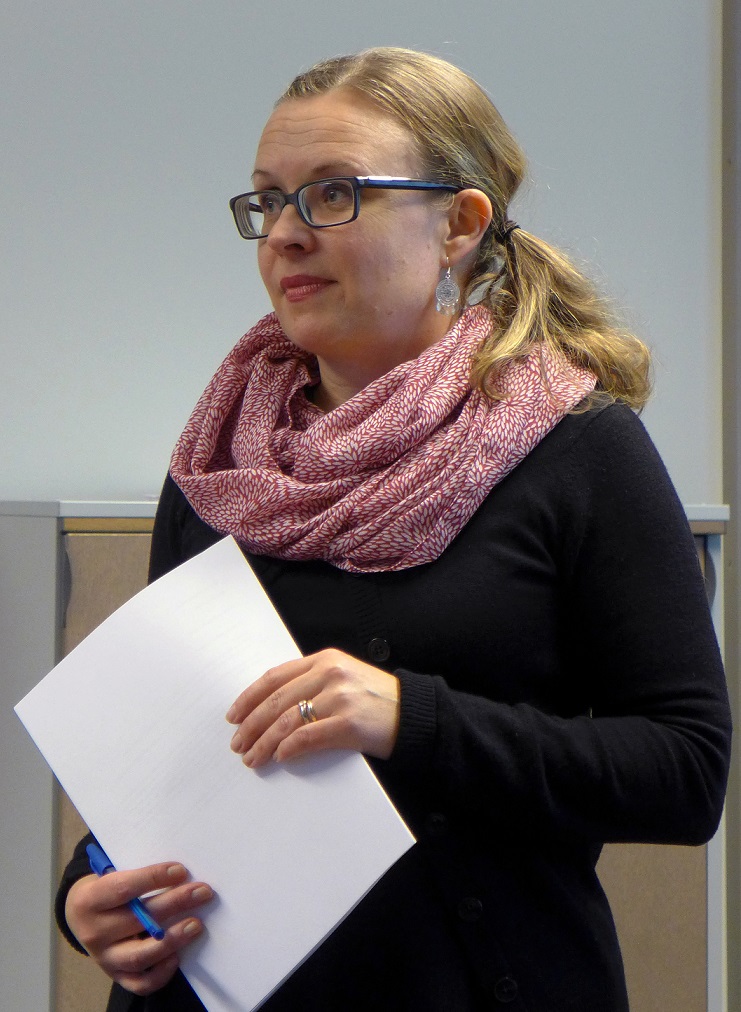 Kulttuurihistorian oppiaine ja SELMA-tutkimuskeskus järjestivät perjantaina 9.12. seminaarin, jossa juhlittiin kyseisen teoksen ilmestymistä. Seminaarissa kuultiin puheenvuoroja teoksen toimittajilta ja kirjoittajilta, ja lisäksi seminaariin oli kutsuttu vieraaksi puhumaan historian professori Maria Sjöberg Göteborgin yliopistosta. Seminaarin avasivat kirjan toimittajat Maarit Leskelä-Kärki ja Tiina Kinnunen, jotka kertoivat aluksi jo vuosia sitten käynnistyneestä kirjahankkeesta sekä sen tarpeellisuudesta ja ajankohtaisuudesta historiantutkimuksen kentällä.
Kulttuurihistorian oppiaine ja SELMA-tutkimuskeskus järjestivät perjantaina 9.12. seminaarin, jossa juhlittiin kyseisen teoksen ilmestymistä. Seminaarissa kuultiin puheenvuoroja teoksen toimittajilta ja kirjoittajilta, ja lisäksi seminaariin oli kutsuttu vieraaksi puhumaan historian professori Maria Sjöberg Göteborgin yliopistosta. Seminaarin avasivat kirjan toimittajat Maarit Leskelä-Kärki ja Tiina Kinnunen, jotka kertoivat aluksi jo vuosia sitten käynnistyneestä kirjahankkeesta sekä sen tarpeellisuudesta ja ajankohtaisuudesta historiantutkimuksen kentällä.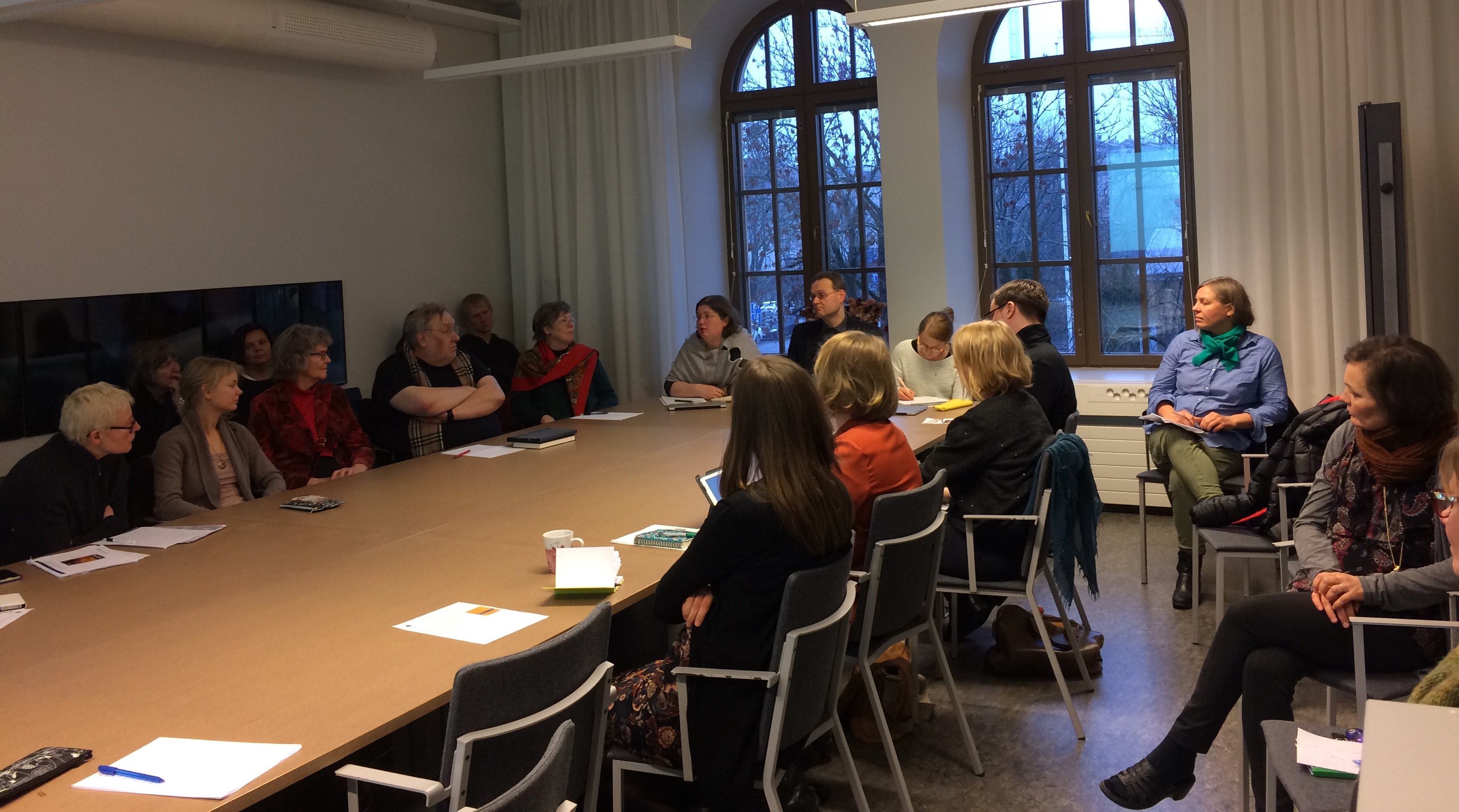
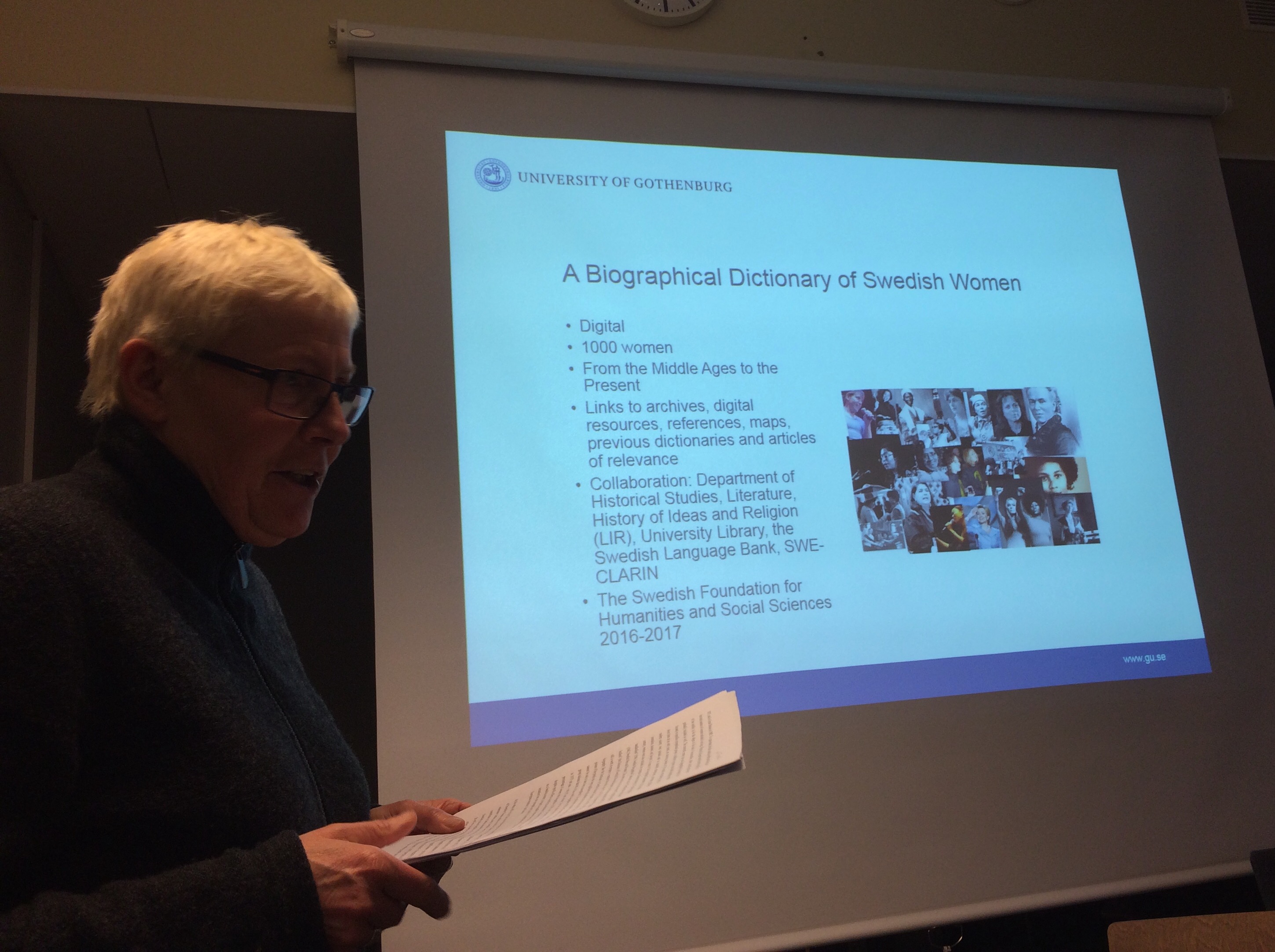 Maria Sjöberg kertoi seminaarissa meneillään olevasta digitaalisesta projektista Swedish Women On-line (SWO).
Maria Sjöberg kertoi seminaarissa meneillään olevasta digitaalisesta projektista Swedish Women On-line (SWO). 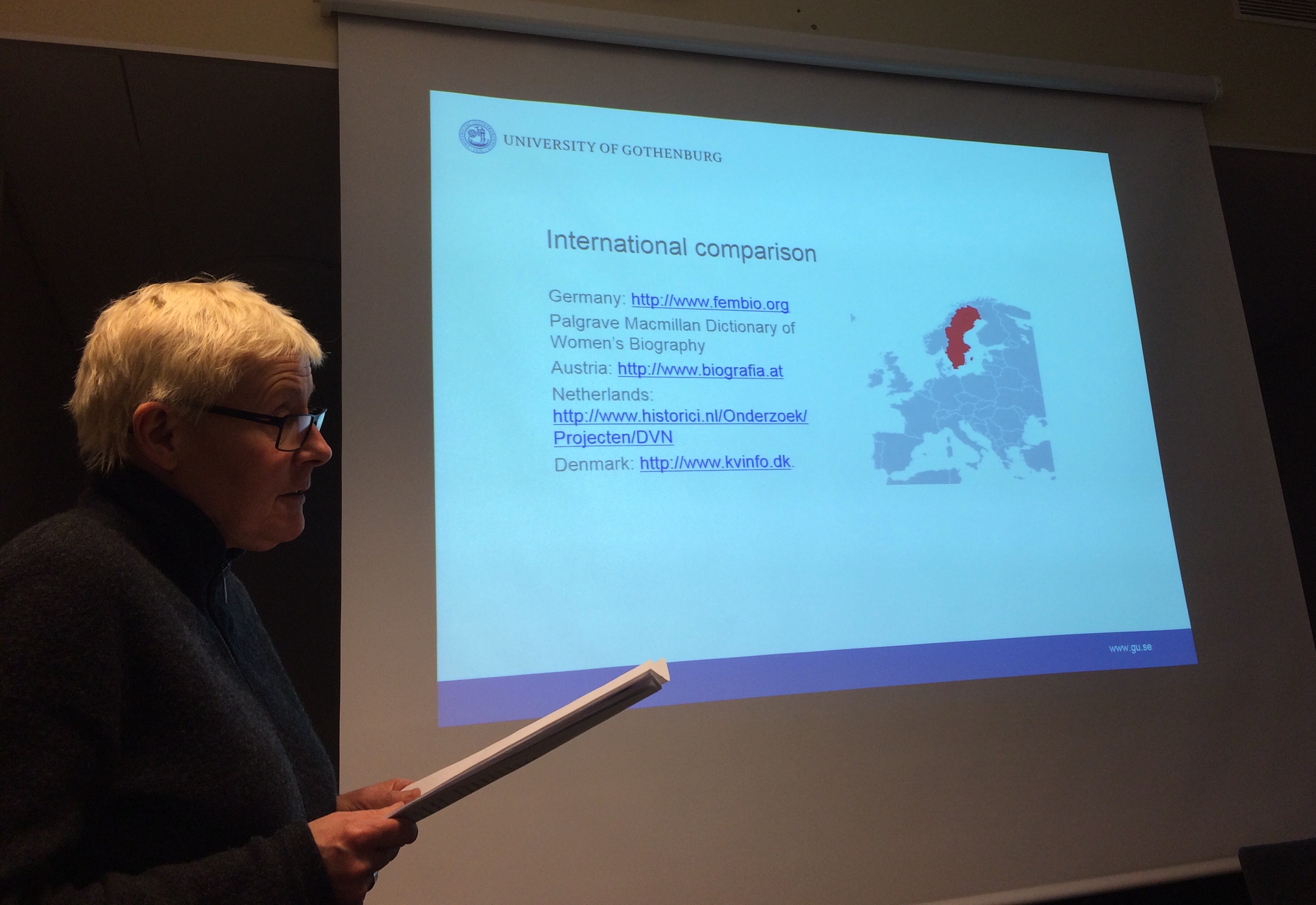




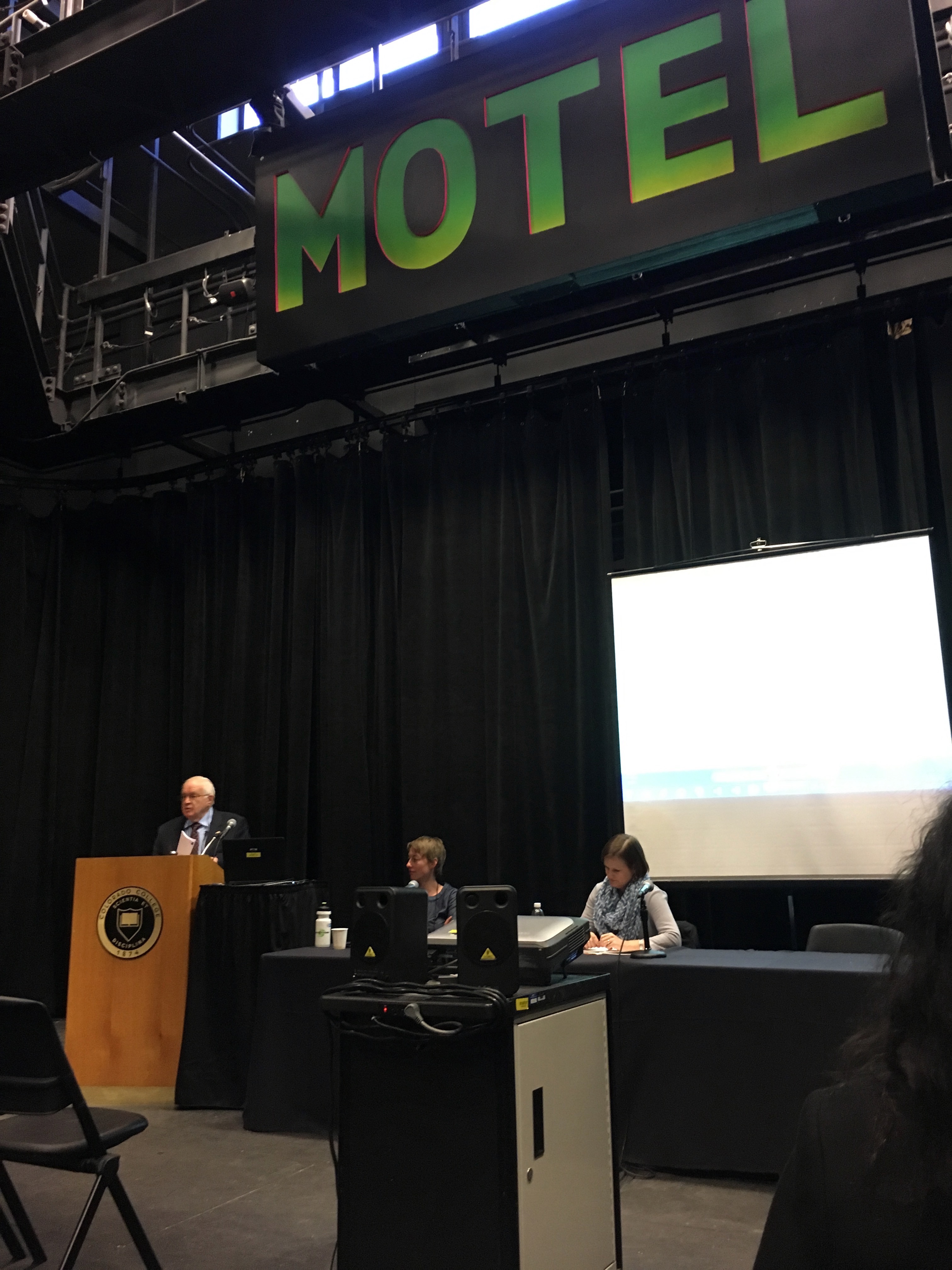




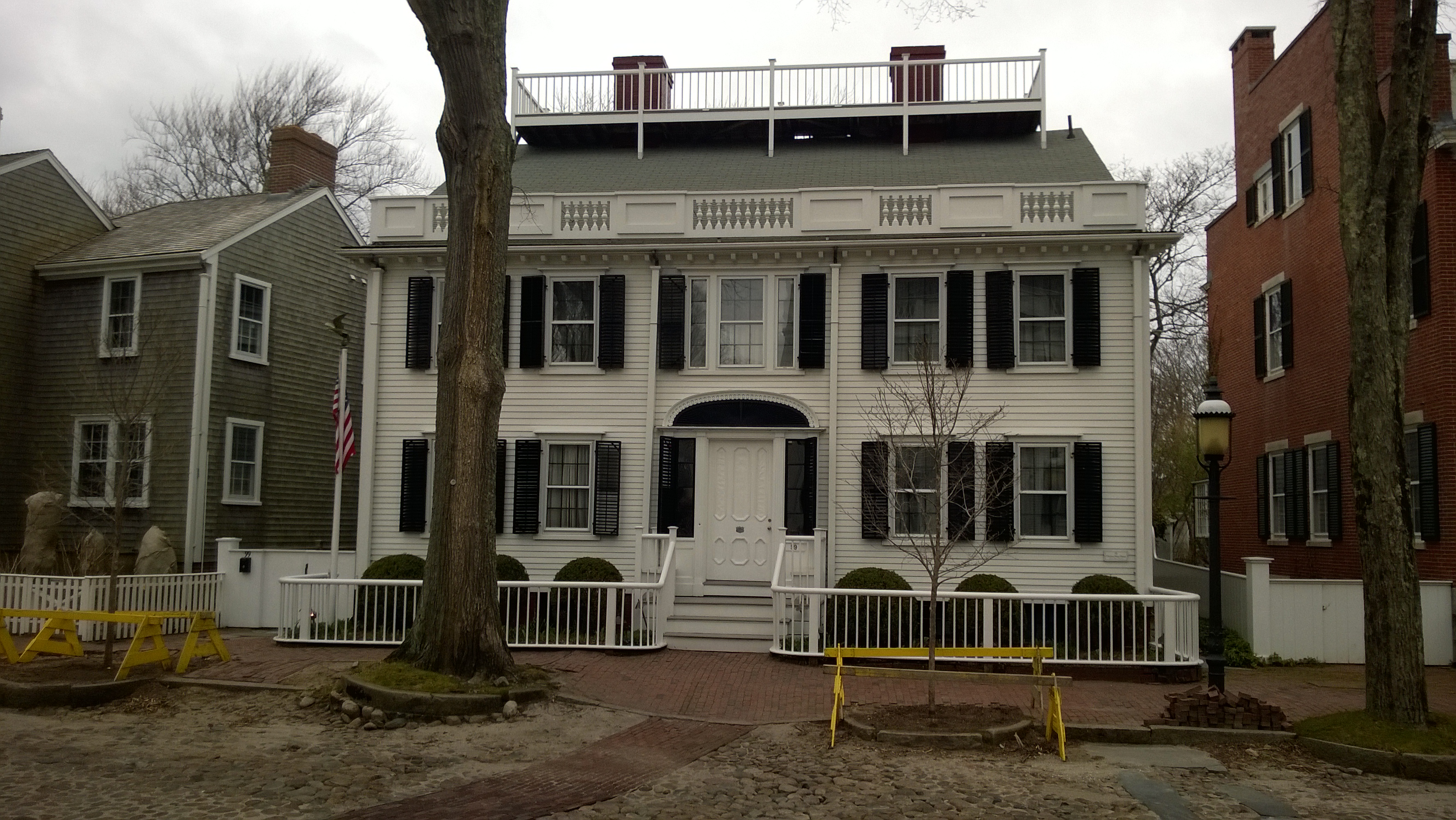










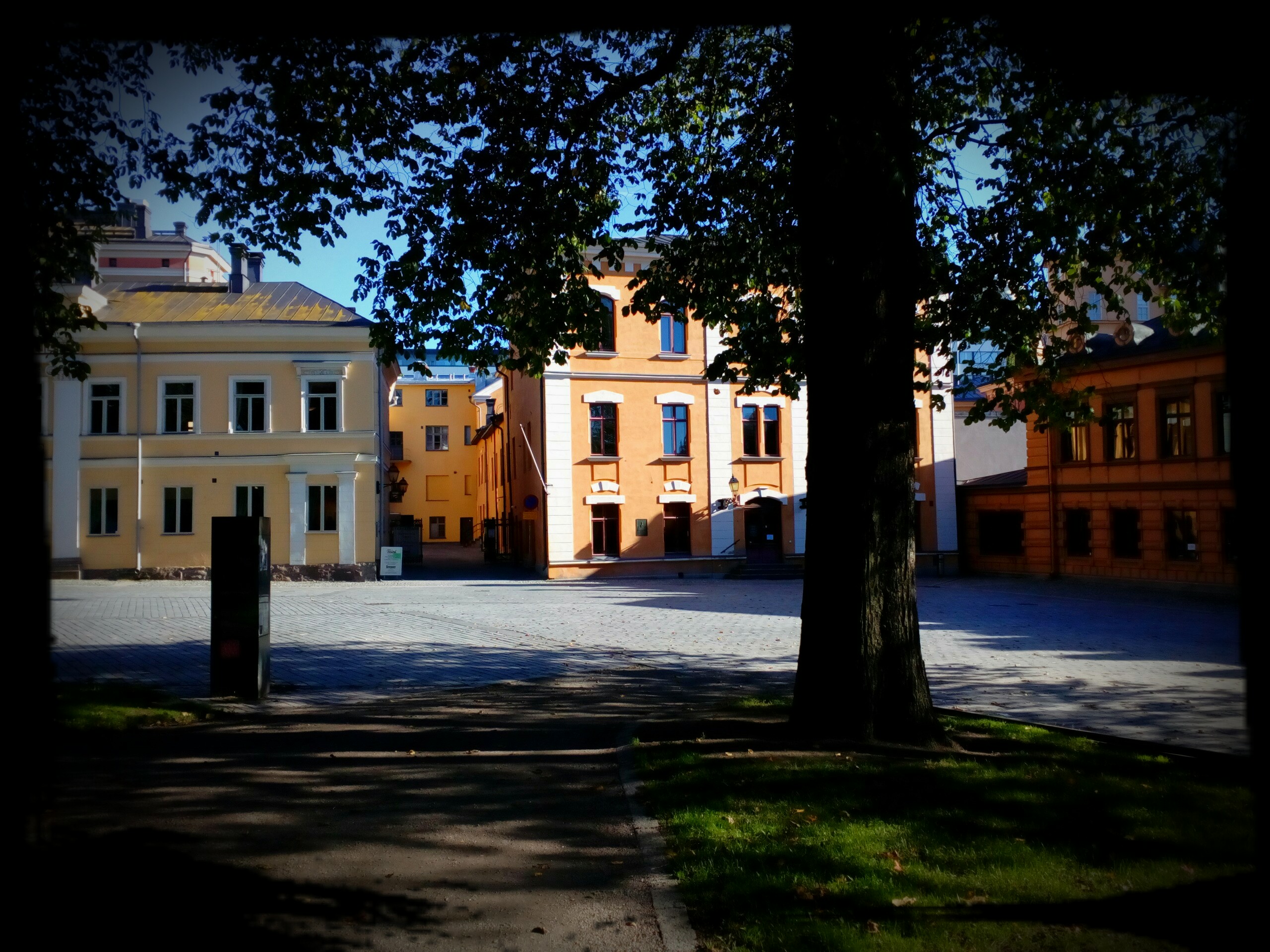
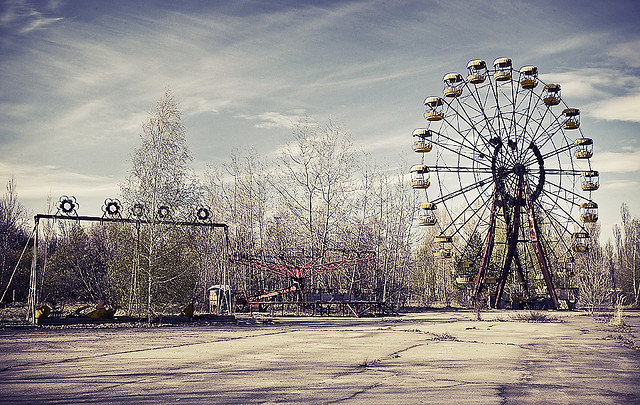 Ennen luentosarjan alkua voit virittäytyä aikakauteen seuraamalla keväistä seminaariamme Ytimen varjossa. 30 vuotta Tsernobylistä verkon kautta. Seminaarin kaikki puheenvuorot ovat kuultavissa ja katsottavissa seuraavien linkkien takaa.
Ennen luentosarjan alkua voit virittäytyä aikakauteen seuraamalla keväistä seminaariamme Ytimen varjossa. 30 vuotta Tsernobylistä verkon kautta. Seminaarin kaikki puheenvuorot ovat kuultavissa ja katsottavissa seuraavien linkkien takaa.



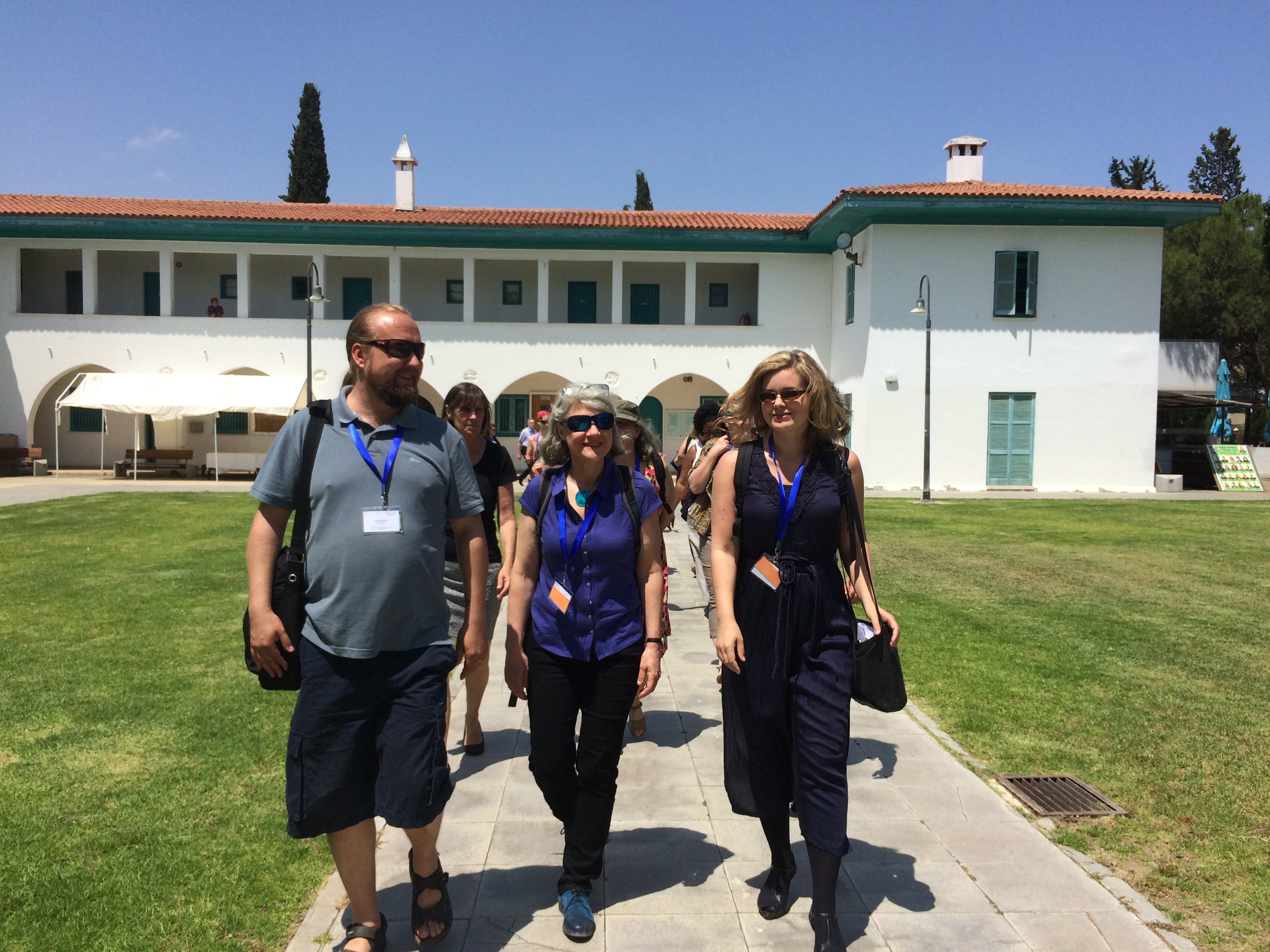
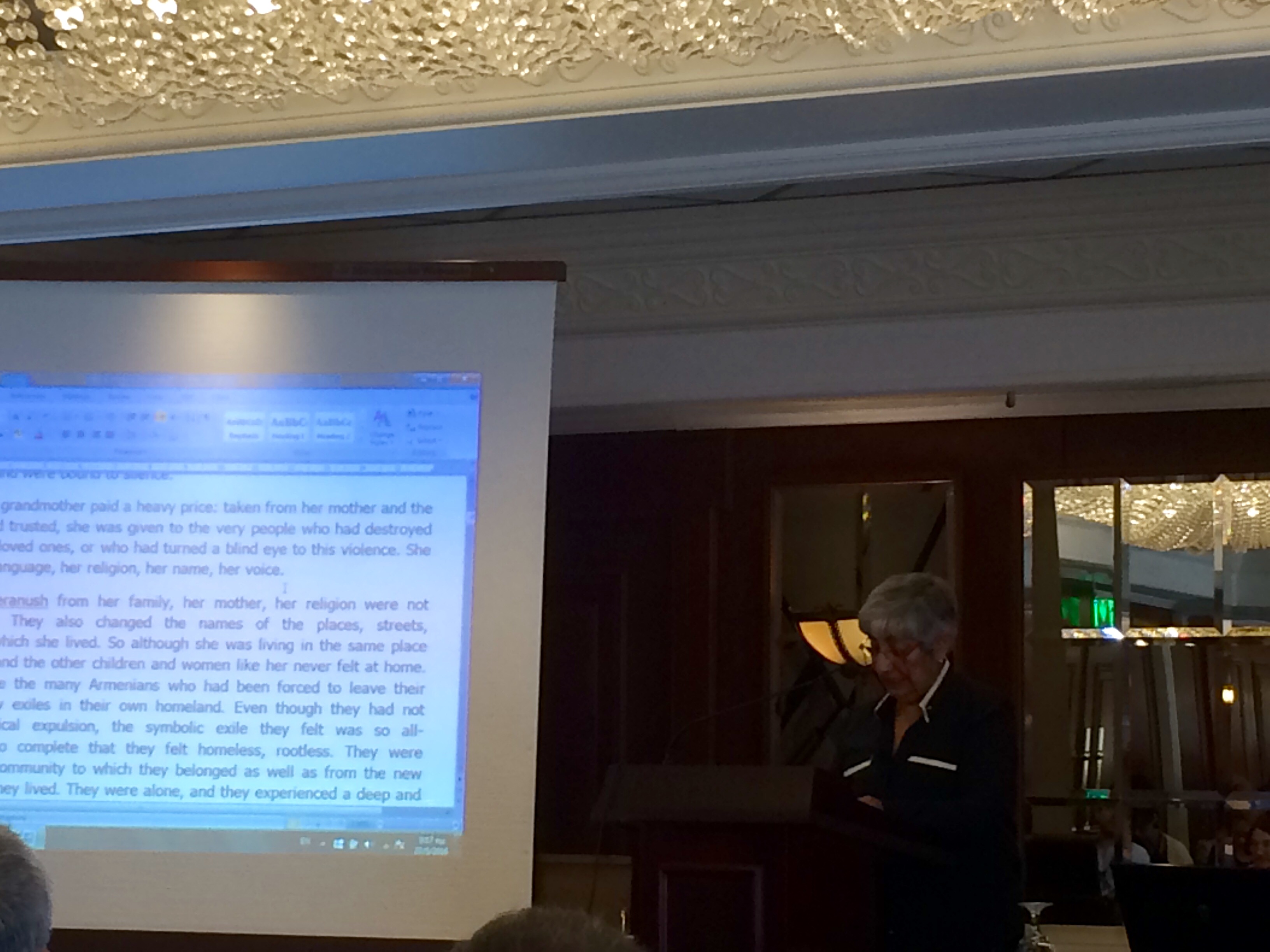




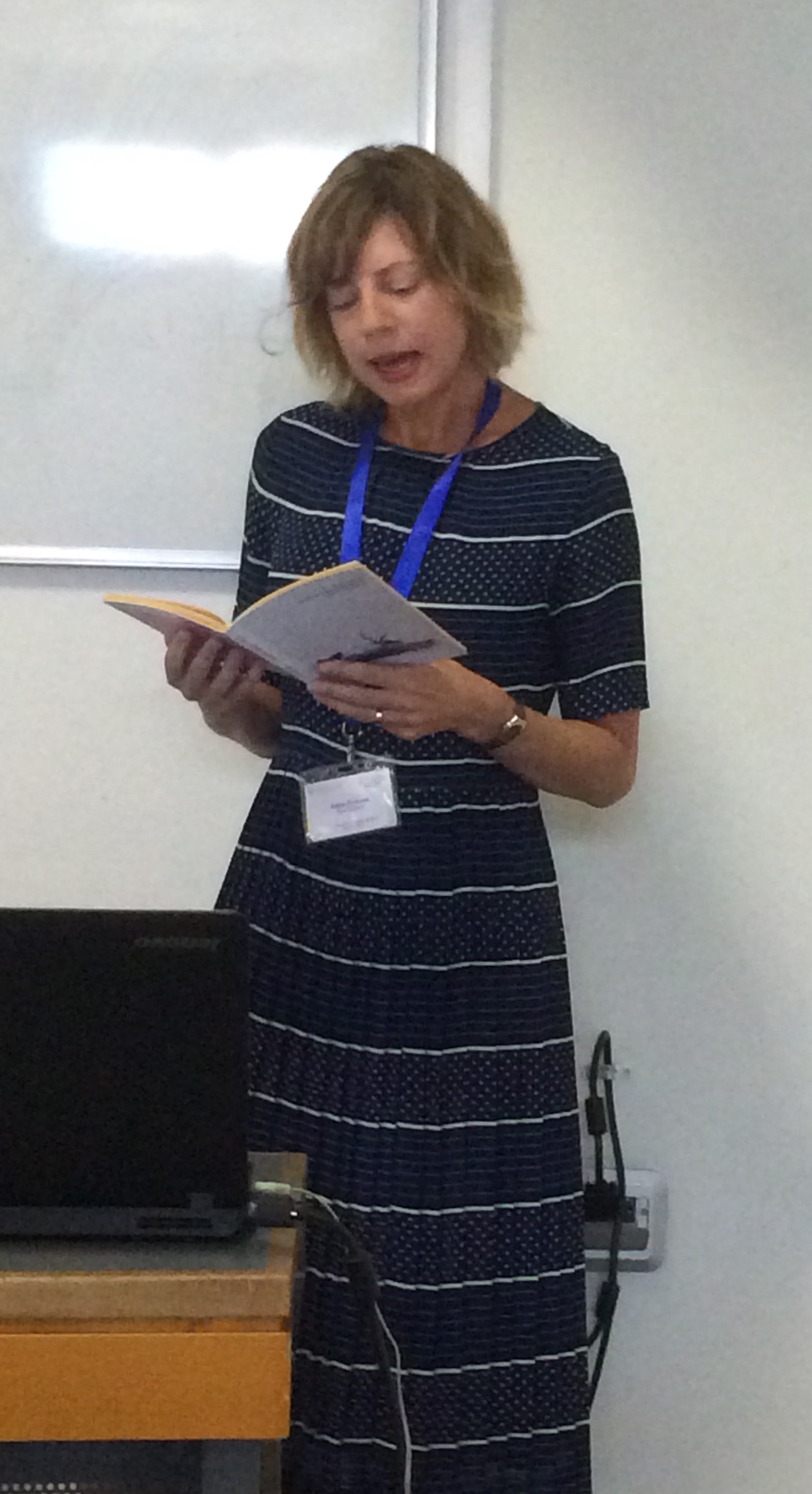
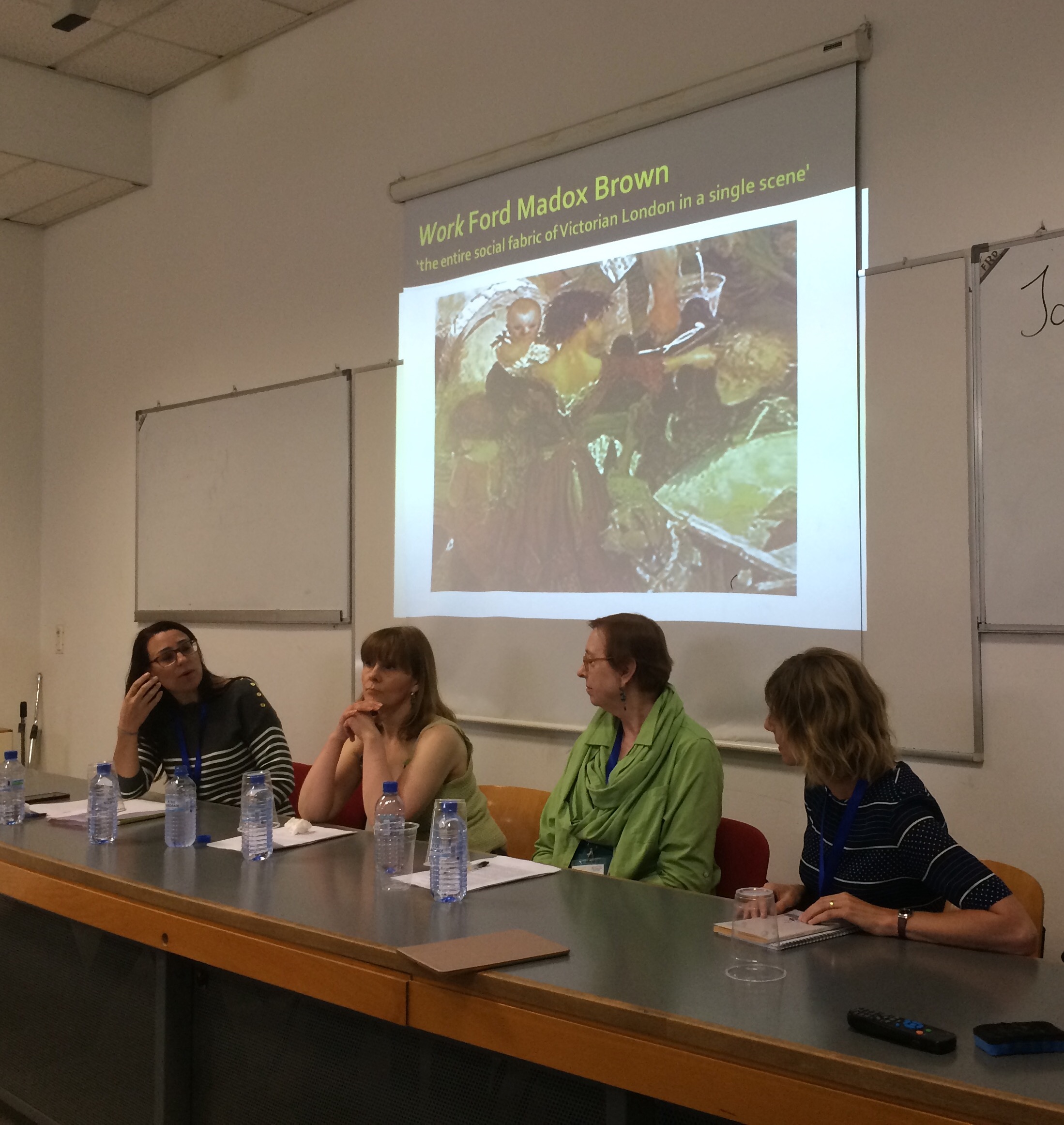



 The picture painted by Martin, of a university system driven by its bureaucratic and accountancy arm, is familiar to me from experience in several Anglophone countries, most notably Australia. Nearly thirty years ago a White Paper produced by Education Minister John Dawkins led to what was called the Dawkins Revolution. In its wake there were forced mergers between universities and tertiary training colleges, the re-introduction of university fees, and a reduction in government funding to universities, which were then forced to chase income and to commercialise education. The research activity tended to be measured by the ability to attract funding through grants, leading to the absurd situation in which the value of a particular research project was assessed not by what it produced, but by how much it cost; that is, in effect, not by cost effectiveness, but by cost ineffectiveness.
The picture painted by Martin, of a university system driven by its bureaucratic and accountancy arm, is familiar to me from experience in several Anglophone countries, most notably Australia. Nearly thirty years ago a White Paper produced by Education Minister John Dawkins led to what was called the Dawkins Revolution. In its wake there were forced mergers between universities and tertiary training colleges, the re-introduction of university fees, and a reduction in government funding to universities, which were then forced to chase income and to commercialise education. The research activity tended to be measured by the ability to attract funding through grants, leading to the absurd situation in which the value of a particular research project was assessed not by what it produced, but by how much it cost; that is, in effect, not by cost effectiveness, but by cost ineffectiveness. The title of my paper invokes an analogy with climate change. My argument is that the deterioration of the tertiary education system is not just the manifestation of a localised cluster of problems that can be solved simply by changing an education policy, in the same way that increasingly widespread drought will not be solved by installing some irrigation systems. Climate change is pervasive, the cause of an immense range of problems that would otherwise seem unconnected. Likewise, problems in the university are in fact the expression of more pervasive problems that affect areas of life that would otherwise seem to have nothing to do with each other. Consumerism extends its influence throughout the entire web of our contemporary lives. In what follows, then, there will be points at which you will wonder what I am saying has to do with the university system. That is part of my argument; bear with me – I will draw us back.
The title of my paper invokes an analogy with climate change. My argument is that the deterioration of the tertiary education system is not just the manifestation of a localised cluster of problems that can be solved simply by changing an education policy, in the same way that increasingly widespread drought will not be solved by installing some irrigation systems. Climate change is pervasive, the cause of an immense range of problems that would otherwise seem unconnected. Likewise, problems in the university are in fact the expression of more pervasive problems that affect areas of life that would otherwise seem to have nothing to do with each other. Consumerism extends its influence throughout the entire web of our contemporary lives. In what follows, then, there will be points at which you will wonder what I am saying has to do with the university system. That is part of my argument; bear with me – I will draw us back.

